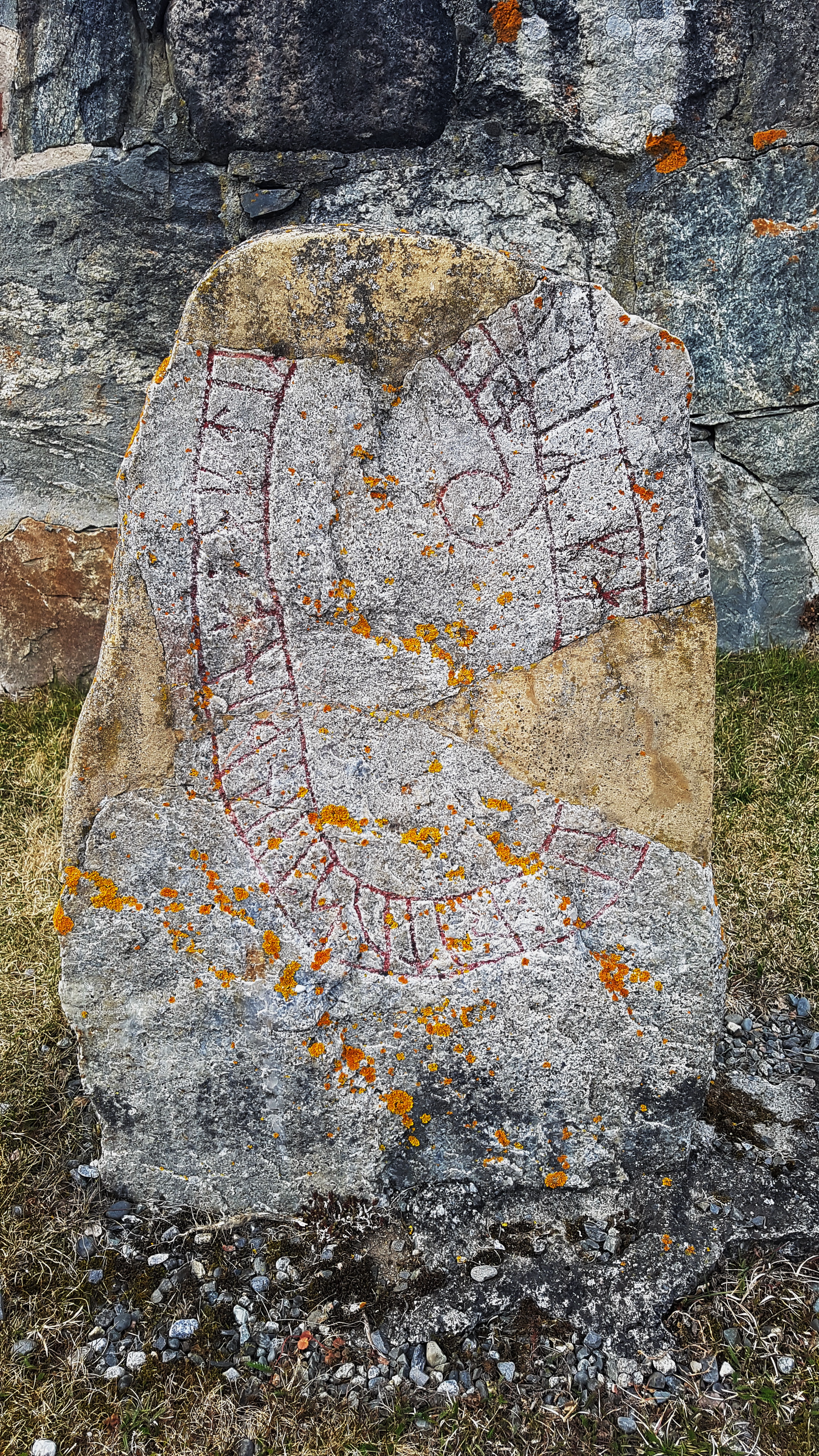Since I’m a viking age archaeologist (my thesis was about Scandinavian women in old Rus’) I’m more than average excited about runestones. In Norway, there is very few rune stones left, but there’s over 2000 of them in Sweden. I’m envious.
The runestones were often raised as memorial stones, and often the name of the person(s) who raised it and for whom they did it is written on the stone. Sometimes the name of the rune carver is also written. Not all runestones are pagan. Quite a few have crosses on them or other connections to Christianity.
The runestone at Selånger is a 11th century stone. Its damaged and we don’t have the full text. But from what we can see from what’s left of the carvings it says something like: ” … sons … erected this stone in memorial of their …” probably their father, but his name is lost.
Finding a rune stone at a place like Selånger is no suprise. It’s an ancient center for cult and power. There are several pagan grave mounds right next to the medieval church. There used to be a medieval royal farm here, and a Thing. These elements tend to gather in specific places of power. Huge grave mounds and medieval churches are like bread and butter. In fact I can not think of any medieval church who doesn’t have grave mounds in their close neighborhood.
For those of us with more than an average interest in runestones, the Swedish National Board Of Heritage have made a .pdf of a book series with all the Swedish runestones. It’s in Swedish, and you can find it her.

